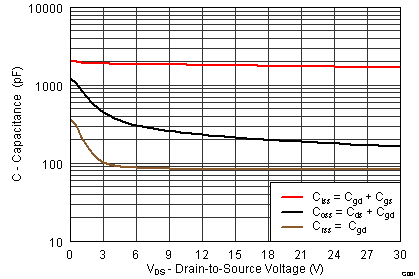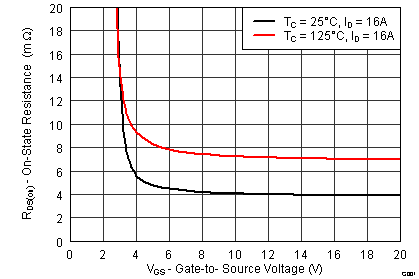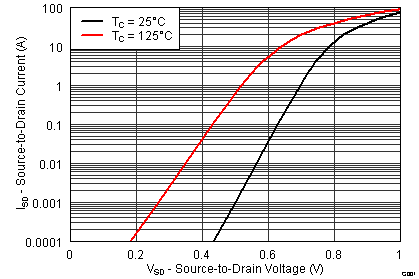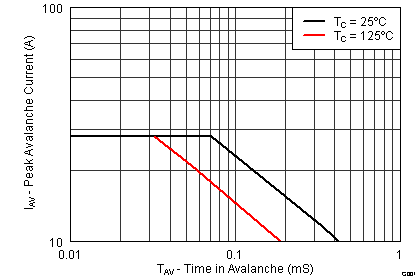ZHCSCQ2 August 2014 CSD17577Q3A
PRODUCTION DATA.
5 Specifications
5.1 Electrical Characteristics
(TA = 25°C unless otherwise stated)| PARAMETER | TEST CONDITIONS | MIN | TYP | MAX | UNIT | ||
|---|---|---|---|---|---|---|---|
| STATIC CHARACTERISTICS | |||||||
| BVDSS | Drain-to-Source Voltage | VGS = 0 V, ID = 250 μA | 30 | V | |||
| IDSS | Drain-to-Source Leakage Current | VGS = 0 V, VDS = 24 V | 1 | μA | |||
| IGSS | Gate-to-Source Leakage Current | VDS = 0 V, VGS = 20 V | 100 | nA | |||
| VGS(th) | Gate-to-Source Threshold Voltage | VDS = VGS, ID = 250 μA | 1.1 | 1.4 | 1.8 | V | |
| RDS(on) | Drain-to-Source On-Resistance | VGS = 4.5 V, ID = 10 A | 5.3 | 6.4 | mΩ | ||
| VGS = 10 V, ID = 16 A | 4 | 4.8 | mΩ | ||||
| gƒs | Transconductance | VDS = 15 V, ID = 16 A | 76 | S | |||
| DYNAMIC CHARACTERISTICS | |||||||
| Ciss | Input Capacitance | VGS = 0 V, VDS = 15 V, ƒ = 1 MHz | 1780 | 2310 | pF | ||
| Coss | Output Capacitance | 208 | 270 | pF | |||
| Crss | Reverse Transfer Capacitance | 79 | 103 | pF | |||
| RG | Series Gate Resistance | 1.4 | 2.8 | Ω | |||
| Qg | Gate Charge Total (4.5 V) | VDS = 15 V, ID = 16 A | 13 | 17 | nC | ||
| Qg | Gate Charge Total (10 V) | 27 | 35 | nC | |||
| Qgd | Gate Charge Gate-to-Drain | 2.8 | nC | ||||
| Qgs | Gate Charge Gate-to-Source | 5.1 | nC | ||||
| Qg(th) | Gate Charge at Vth | 2.5 | nC | ||||
| Qoss | Output Charge | VDS = 15 V, VGS = 0 V | 6 | nC | |||
| td(on) | Turn On Delay Time | VDS = 15 V, VGS = 10 V, IDS = 16 A, RG = 0 Ω |
4 | ns | |||
| tr | Rise Time | 31 | ns | ||||
| td(off) | Turn Off Delay Time | 20 | ns | ||||
| tƒ | Fall Time | 4 | ns | ||||
| DIODE CHARACTERISTICS | |||||||
| VSD | Diode Forward Voltage | ISD = 16 A, VGS = 0 V | 0.8 | 1 | V | ||
| Qrr | Reverse Recovery Charge | VDS= 15 V, IF = 16 A, di/dt = 300 A/μs |
8.2 | nC | |||
| trr | Reverse Recovery Time | 8.6 | ns | ||||
5.2 Thermal Information
(TA = 25°C unless otherwise stated)| THERMAL METRIC | MIN | TYP | MAX | UNIT | |
|---|---|---|---|---|---|
| RθJC | Junction-to-Case Thermal Resistance(1) | 3.0 | °C/W | ||
| RθJA | Junction-to-Ambient Thermal Resistance(1)(2) | 55 | |||
(1) RθJC is determined with the device mounted on a 1-inch2 (6.45-cm2), 2-oz. (0.071-mm thick) Cu pad on a 1.5-inches × 1.5-inches
(3.81-cm × 3.81-cm), 0.06-inch (1.52-mm) thick FR4 PCB. RθJC is specified by design, whereas RθJA is determined by the user’s board design.
(3.81-cm × 3.81-cm), 0.06-inch (1.52-mm) thick FR4 PCB. RθJC is specified by design, whereas RθJA is determined by the user’s board design.
(2) Device mounted on FR4 material with 1-inch2 (6.45-cm2), 2-oz. (0.071-mm thick) Cu.
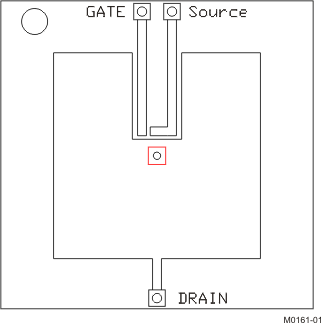 |
Max RθJA = 55°C/W when mounted on 1 inch2 (6.45 cm2) of 2-oz. (0.071-mm thick) Cu. |
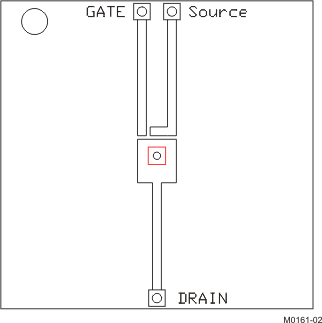 |
Max RθJA = 190°C/W when mounted on a minimum pad area of 2-oz. (0.071-mm thick) Cu. |
5.3 Typical MOSFET Characteristics
(TA = 25°C unless otherwise stated)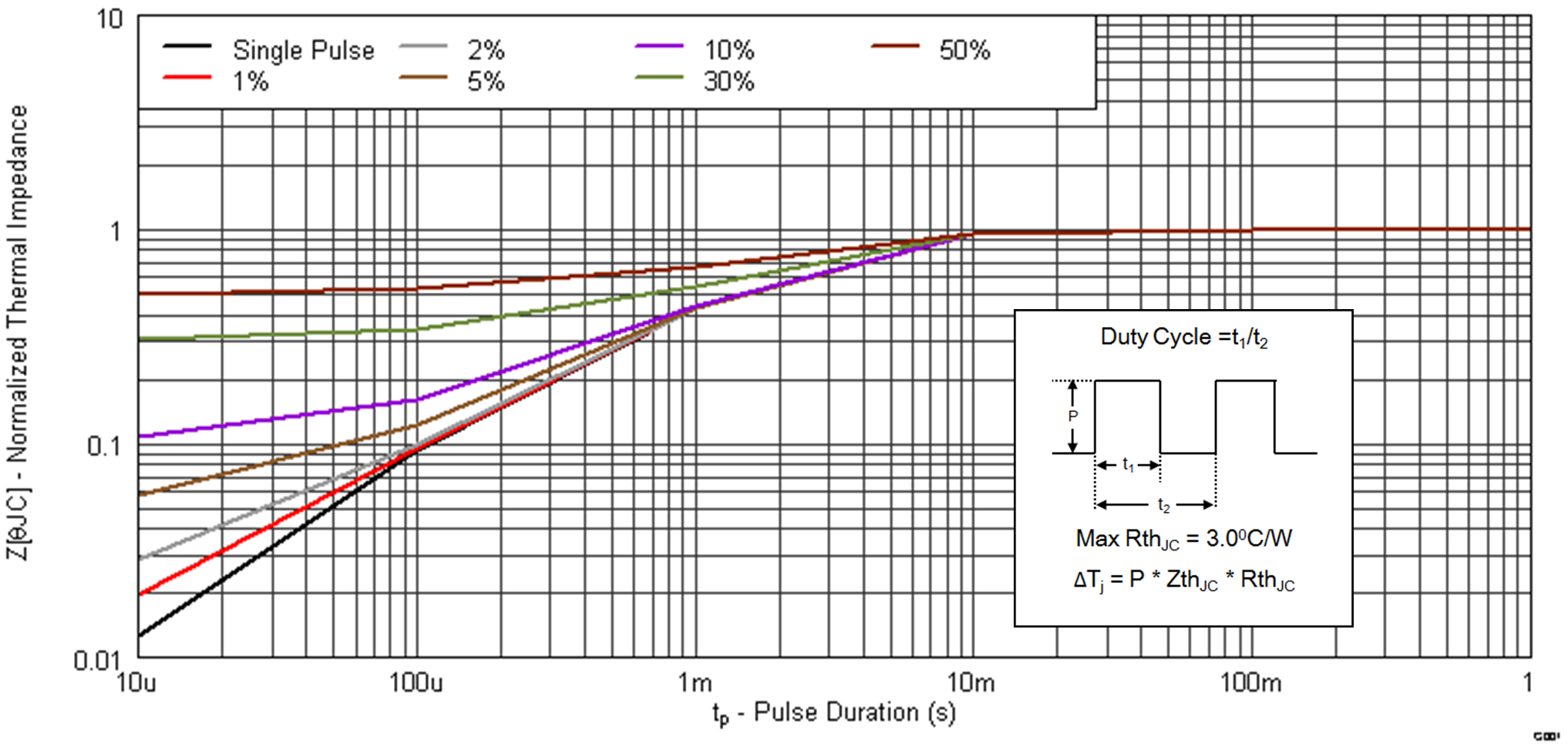
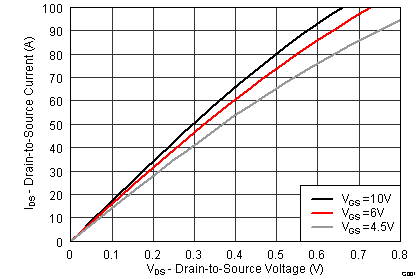
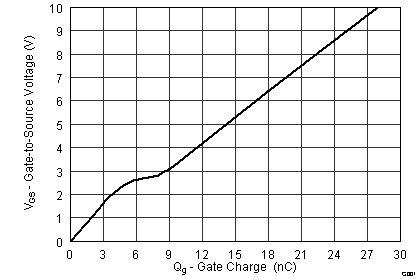
| ID = 16 A | VDS = 15 V | |
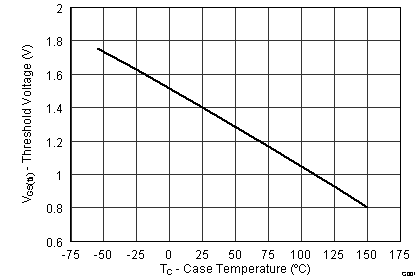
| ID = 250 µA | ||
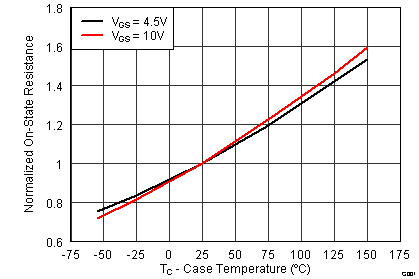
| ID = 16 A | ||
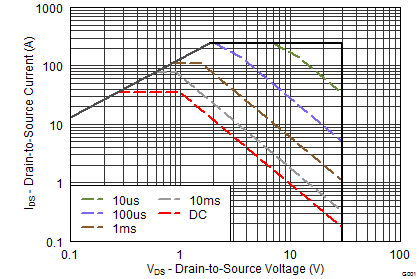
| Single Pulse, | ||
| Max RθJC = 3.0°C/W |
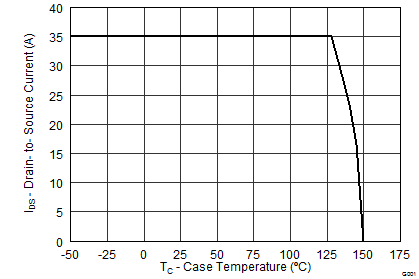
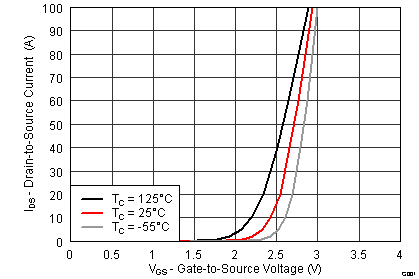
| VDS = 5 V | ||
